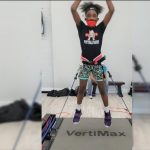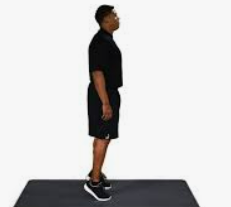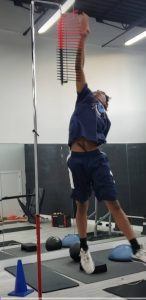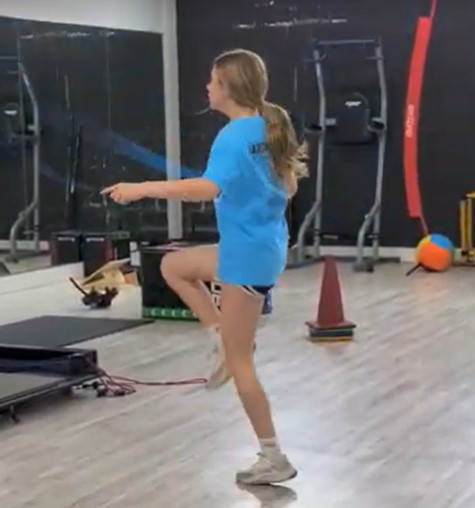Jumper’s Knee
What is Jumper’s Knee?
 A common injury experienced by athletes in various sports is Patellar tendon pain (also known as “jumper’s knee”). According to studies, an estimated 45% of athletes will experience knee pain due to constant jumping and landing. Sometimes knee pain can feel very sharp making it difficult to walk. Other times you may feel slight discomfort when you stand, walk or run. Either way, the best rule is to always seek professional advice first. You don’t want to self diagnose and potentially cause further damage to your knee.
A common injury experienced by athletes in various sports is Patellar tendon pain (also known as “jumper’s knee”). According to studies, an estimated 45% of athletes will experience knee pain due to constant jumping and landing. Sometimes knee pain can feel very sharp making it difficult to walk. Other times you may feel slight discomfort when you stand, walk or run. Either way, the best rule is to always seek professional advice first. You don’t want to self diagnose and potentially cause further damage to your knee.
What Causes Jumper’s Knee?
Several factors can contribute to an athlete developing jumper’s knee. First, you have to take into consideration how we are wired from the waist down. The patella (knee cap), femur, tibia, fibula bones, various ligaments (responsible for attaching bones together), and tendons that connect bones to muscles, work together like a connected chain system. If their is one bad link in the chain, it can effect the other parts of the chain. For example, the patellar ligament, is a band of connective tissue that appends the muscles in the front of your thigh to the patella. Constant running, jumping and multiplanar movements can cause the tissue to wear down over time. The degree and time of the debilitation depends on the amount of rest and recuperation the athlete receives before and after practices and competitions.
Another cause discovered via recent studies suggests that limitations in strength and range of motion in the joints above and below the knee, may contribute to the risk of developing tendon injuries. Weak ankles or hips may cause knee pain. In addition, if you have a history of prior injuries, poor rehabilitation and participate in imbalanced training programs, over time your basic functional movement patterns will be compromised.
An athlete may experience hip pain and or ankle pain due to muscles and ligaments over compensating for the weakened patellar ligament.
3 Key Exercises for Jumper’s Knee?
Implementing a consistent exercise routine to strengthen glutes and leg muscles will support knee joints during activity. If your team warmup session is ten minutes or less, develop a stretching routine early in the morning and at least 45 minutes prior to practice. This may help alleviate nagging pains in an around your knee. Below are three key hip and knee mobility exercises you can do to help you with jumper’s knee.
- Quadricep Foam Roller Exercise
-
- Place a foam roller under your quads and balance on your elbows in a plank position.
- Engage your core while keeping your low back straight.
- Slowly roll from the point just above the knee to right below the hip joint.
- Slowly roll over areas that are tender for at least 10-12 seconds or until the pain lessens.
- Do not spend more than 2 minutes on the foam roller.
2. Straight Leg Raise
-
- Lie on your side with the bottom leg straight and the top leg bent in front with your foot flat on the floor.
- Place one hand over your pelvis for added stability
- Lift the bottom leg up, keeping it straight.
- Keep the foot and kneecap pointed forward during movement.
- Return to the initial position.
- Complete 3 sets of 10 to 15 repetitions
3. Hamstring Stretch
- Lie down on your back, bend your knee slightly towards your chest to place a resistance band under the foot.
- Once the band is securely placed, raise your leg by flexing your hip and knee.
- Flex your foot, toes pointing towards you.
- Slowly straighten the knee by pushing your heel toward the ceiling.
- You will feel a stretch in the back of your thigh.
- Hold the stretch for up to 20 seconds, then start the stretch again.
- Complete 3 sets of 20-second holds.
For a free assessment and full series of exercises to assist you with minimizing your risk of knee injury while increasing your vertical, contact us today!

 Previous Post
Previous Post Next Post
Next Post We provide virtual, personal and team training services. We are conveniently located inside the Ross Sports Performance Center at 2337 Philmont Avenue - Suite 109, Huntingdon Valley, PA 19006
We provide virtual, personal and team training services. We are conveniently located inside the Ross Sports Performance Center at 2337 Philmont Avenue - Suite 109, Huntingdon Valley, PA 19006
